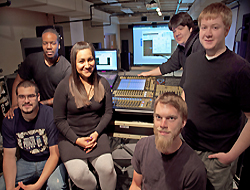
Situational Tools
Anyway, we’ve been busy in recent years adjusting to the new paradigms in the industry and the academy, and the news ain’t all bad.
Unlike many of the other geezers, I was an early adopter of digitally based loudspeaker management.
This was not due to some great vision of the future – TGI corporate (my masters at the time) sent me a BSS Varicurve with the notion that it would help loudspeaker system demos.
The manual was impenetrable, and (the horror!) the thing had a measurement component. The parametric filters were cool, and the memory part was very cool.
It even helped me hide a small loudspeaker manufacturing boo-boo the first time I used it at a convention. Too slow for real time editing under fire (that got a lot easier once we had laptop interfaces, but that’s getting ahead of the story), but a wonderful situational fixit tool when time allowed.
Soon after we got the first Omnidrive, the 388, with an even worse manual and less of a 3K15 Hz artifact, though still a tad edgy. For years we’d huddle around the thing in class, trying to get a glimpse of the tiny screen.
As we moved to XTA/Audiocore, we were able to get the control software up on projection, and the world changed. At first, I would rip through the adjustments, taking the old sound company paradigm into the classroom.
This is the way many of our “you can’t learn this in school” folks got it – senior engineer pulls a tweak in the warehouse or on the jobsite, and the newly hired listen and observe. Eventually it sinks in. Maybe.
The tiny screen minimized the impact of the presentation, which changed radically with the arrival of XTA/Audiocore and the world’s noisiest projector, circa the year 2000 or so.
Even with the gale from the projector fan and the unit’s suspect resolution, we were able to provide a visual component visible to all. Best of all, we could spread out around the room, making the experience less susceptible to fan noise and unsettling hygienic mishaps.
